Even though I've been sick with the COVID-19 virus that's going around, I've been trying to play my guitar when I feel good enough.
The stock power tubes in my Fender '65 Princeton Reverb reissue guitar amplifier were starting to sound ratty, so I thought I'd order some NOS vacuum tubes for it from Roy and Dale at Radio Electric Supply, my go-to guys for NOS USA vacuum tubes.
They arrived yesterday, and today I had enough energy for a little tube swapping, so I thought I'd tell you about it.
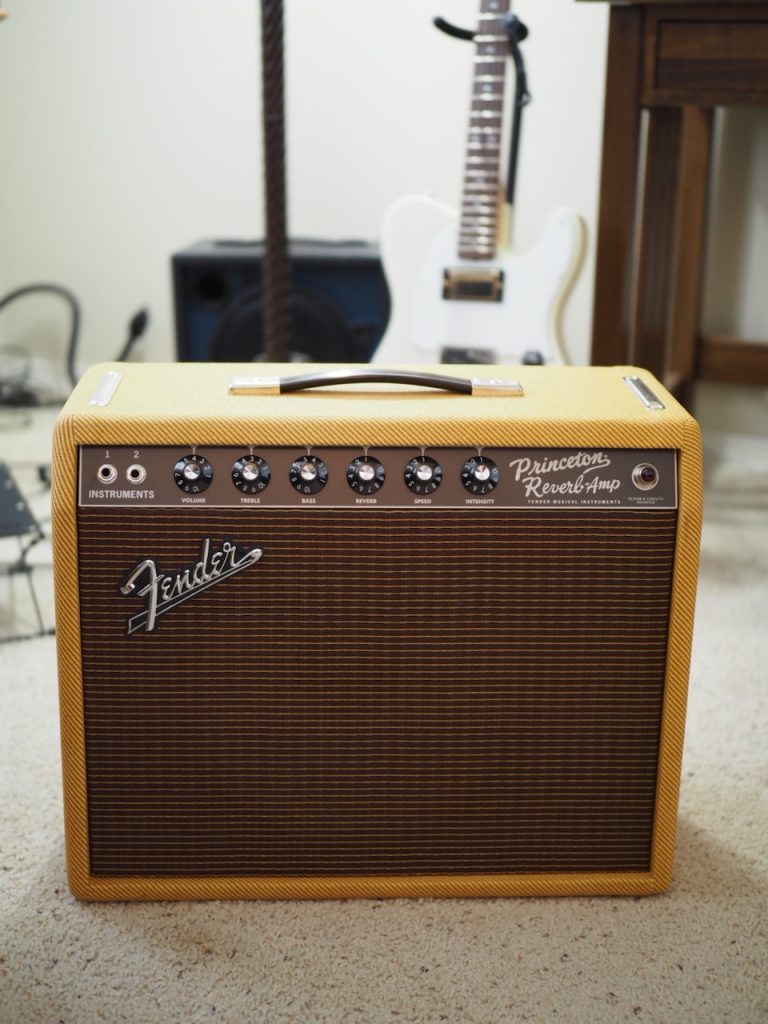
I bought my Fender 15 watt '65 Princeton Reverb reissue guitar amplifier from Sweetwater. This is what Sweetwater says about this particular reissue:
"The Fender '65 Princeton Reverb Lacquered Tweed electric guitar tube combo amplifier is a Sweetwater exclusive! Fender used the beloved '65 Princeton Reverb as a starting point, then they added a beautiful and vintage-style lacquered tweed covering that will transport you back to the great Fenders of the 1950s. The speaker has been beefed up to a 12" Eminence Cannabis Rex for its blend of smoothness and sparkle. And of course you still have that magnificent Fender spring reverb and tremolo onboard. The '65 Princeton Reverb Lacquered Tweed will add a lot to any collection."
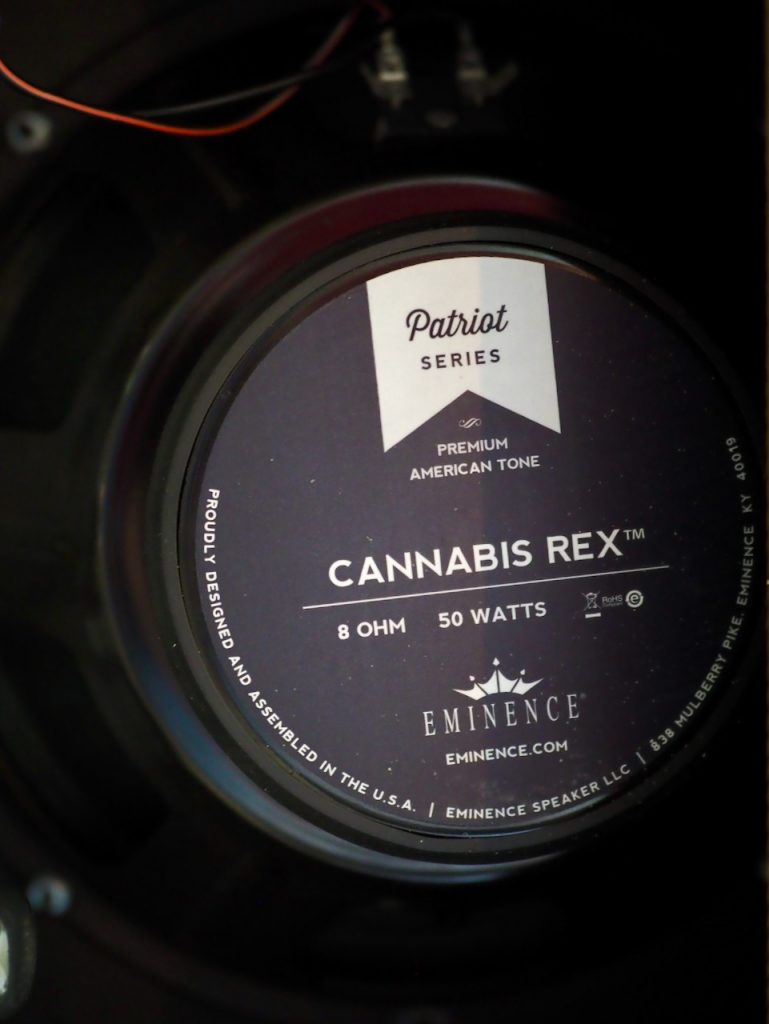
"When Fender originally released their Princeton guitar amplifier, their intent was to offer a good practice amplifier for guitarists needing to work on their chops. But the model quickly caught on with professional and gigging guitarists for how effortlessly it delivered both chiming cleans and sweet tube-amp breakup. Whether speaking about the original tweed designs in the 1950s or the iconic Blackface models of the '60s, the Princeton has been a mainstay with players for over 50 years."

"The Sweetwater-exclusive Fender '65 Princeton Reverb Lacquered Tweed blends elements of two of the most sought-after eras of the combo. While the circuitry is based on the clear-as-a-bell Blackface models, these amps boast a stunning lacquered tweed covering that imparts a '50s old-school appearance. And Fender's vintage-style brown and gold grille cloth helps finish off the look. If you've always loved the tonal characteristics of a Fender Blackface but favor the warm, inviting look of a tweed, this amp's for you."
"The amplifier's appearance isn't the only new addition to the '65 Princeton Reverb Lacquered Tweed. Fender also outfitted this little giant with a 12" Eminence Cannabis Rex speaker. Not only does a larger speaker (original Princeton Reverbs come with a 10" speaker) offer a more powerful low end and better projection, but the Cannabis Rex is a favorite for how clear and chiming its top end is, without ever being strident. And the traditional Fender spring reverb and tremolo add all the swampy goodness these amps are known for."
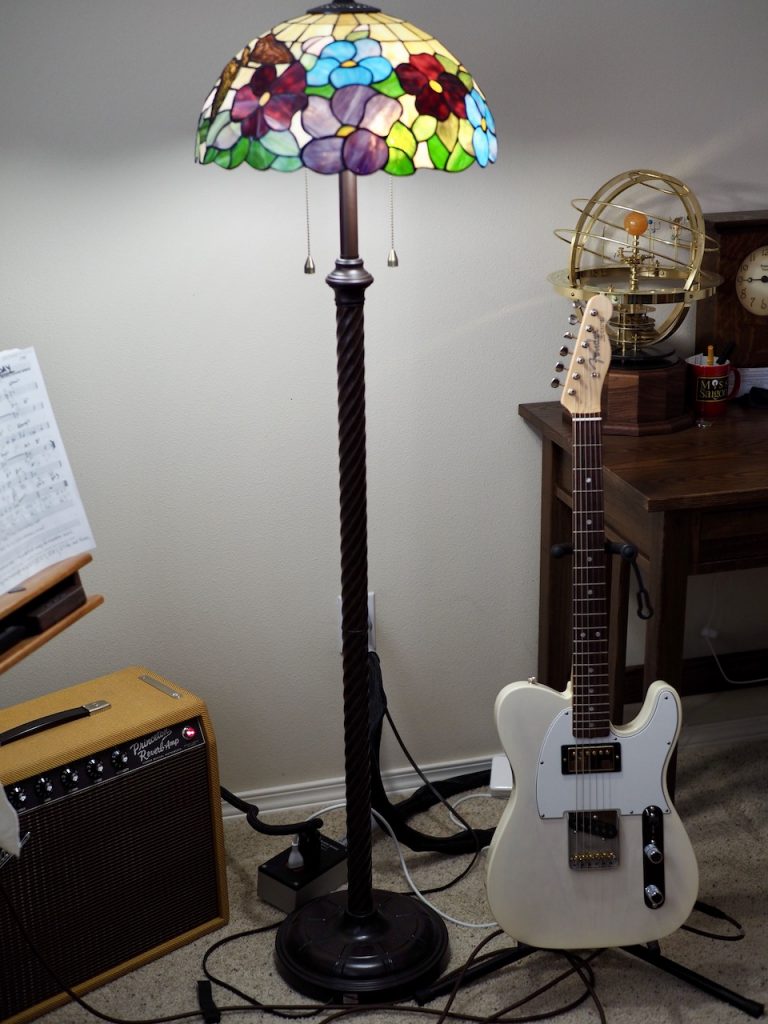
Overall, I have been pretty happy with my Fender '65 Princeton Reverb, with the exception of the stock tube set, which has proven to be rather unreliable regarding tube failures with the 6V6GT power tubes.
The owner's manual for the Fender '65 Princeton Reverb is pretty basic, and contains minimal useful information.
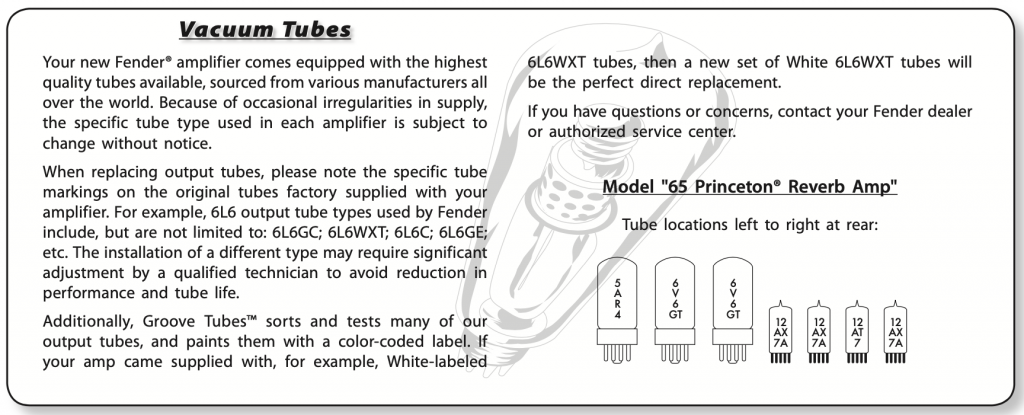
Above is what the owners manual tells you about the vacuum tube complement. Notice that while the manual gives you the order of the tubes left to right, it doesn't specify what the functions of the tubes actually do.
Those who are a bit familiar with vacuum tubes know that the 5AR4 is a rectifier and that the 6V6GTs are power tubes, but what is the function of each of those other small signal tubes used as preamp tubes?
Probably most people don't care about that, but if you want to do some tube rolling in your Fender '65 Princeton Reverb reissue, you want to know where to spend your money on good tubes where they will make the most difference.
For the original Fender '65 Princeton Reverb "blackface" (1964 to 1967), the circuit is described as AA1164 (pre-CBS), AB1270 (CBS), and AA764 (CBS) - more info HERE at Fenderguru.com, which is a great source of information, and also describes a number of popular modifications that can be made to the Fender '65 Princeton Reverb.
The order of tubes in the original "blackface" AA1164 circuit as seen from behind, left to right, is: V7 5U4GB (rectifier tube); V6 6V6 (power tube #2); V5 6V6 (power tube #1); V4 12AX7 (1/2 vibrato & 1/2 phase inverter); V3 12AX7 (1/2 reverb recovery & 1/2 reverb mix); V2 12AT7 (reverb send), and V1 12AX7 (preamp).
The order of tubes in the '65 Princeton Reverb reissue that I have is described by Sweetwater as being "based" on the "blackface" circuit.
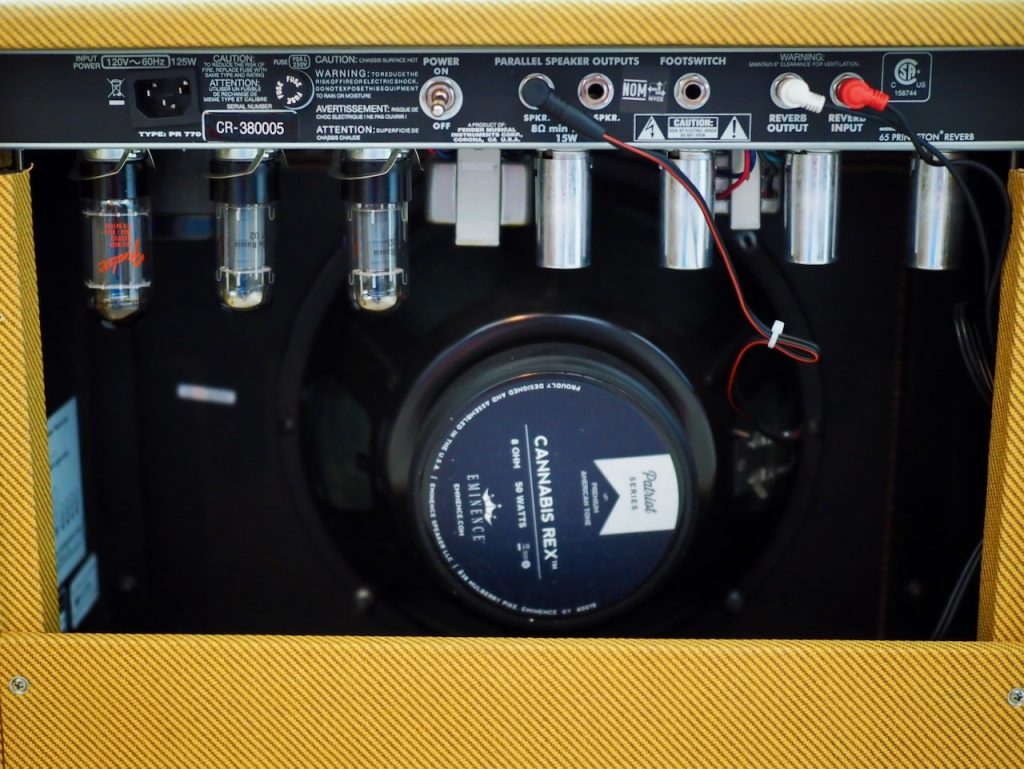
However, as seen from behind (above), left to right, the tube complement is: V7 5AR4 (rectifier tube); V6 6V6 (power tube #2); V5 6V6 (power tube #1); V4 12AX7 (1/2 vibrato & 1/2 phase inverter); V3 12AX7 (1/2 reverb recovery & 1/2 reverb mix); V2 12AT7 (reverb send), and V1 12AX7 (preamp).
V7 5AR4 Rectifier
So in the '65 Princeton Reverb reissue the primary difference in tubes was the switch to the 5AR4 rectifier from the 5U4GB rectifier that was used in the original "blackface" AA1164 circuit. As you would expect, there is some debate about which rectifier was the best, with some saying the 5AR4 is the best rectifier, with others preferring the 5U4GB rectifier.
I have read that you cannot swap the 5AR4 rectifier used in the reissue for 5U4GB rectifier used in the original "blackface", but I haven't studied the circuit diagram closely enough to understand the full implications of that, and the vacuum tube substitution table I consulted (HERE) does not show that the 5AR4 can be substituted for a 5U4GB, or vice versa.
So I recommend you stick with the 5AR4 rectifier used in the reissue, and just experiment with different brands of 5AR4 rectifiers if you are looking for a little different sonic flavor.

Stock 5AR4 (left), and Sylvania NOS 5AR4 rectifier (right).
I really like the NOS Sylvania 6CS7 tubes I use in my Leben CS600, as they're warmer and richer sounding that the others I've tried.
So for my initial tube substitutions I decided to go all Sylvania NOS for V1, V5, V6, and V7, with experimentation to come later for V2, V3, and V4.
V6 & V5 6V6GT Power Tubes
I chose the ruggedized and low-noise military version of Sylvania NOS 6V6, which has the smoked glass to reduce noise.
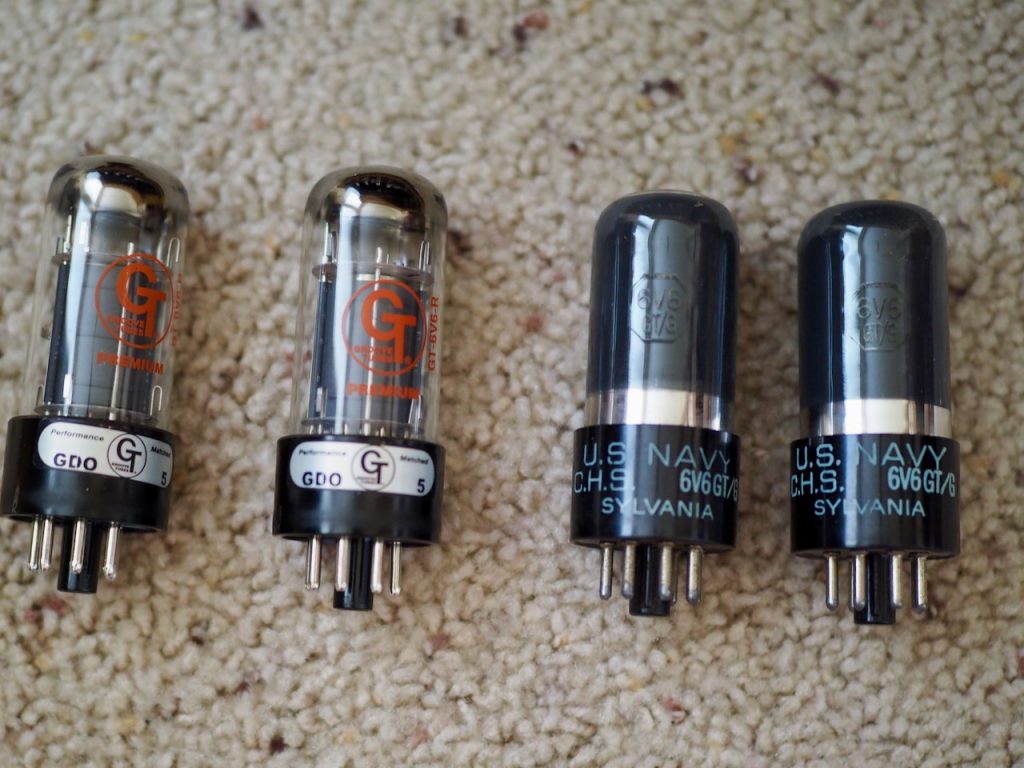
Stock 6V6 tubes (left), NOS Sylvania 6V6 tubes (right).
V1 12AX7 (preamp)
For the V1 12AX7 you can substitute a 5751, which has less gain. As with all tube substitutions, some prefer the higher gain of the a 12AX7, while others like me, prefer a NOS 5751 in V1 because it sounds sweeter and richer.

Stock 12AX7 (left), NOS RCA 5751 (center), NOS Sylvania 5751 (right).
I've previously replaced my stock V1 Electro-Harmonix 12AX7 with a NOS RCA 5751 and thought it made for a nice improvement, but that's for jazz, so it might not do it for you if you have another application in mind, like rock & roll, for example.

It is a lot easier to replace the tubes if you can see the orientations of the sockets, so I flipped my '65 Fender Princeton Reverb reissue upside down and replaced V1, V5, V6, and V7 with the NOS Sylvania's.
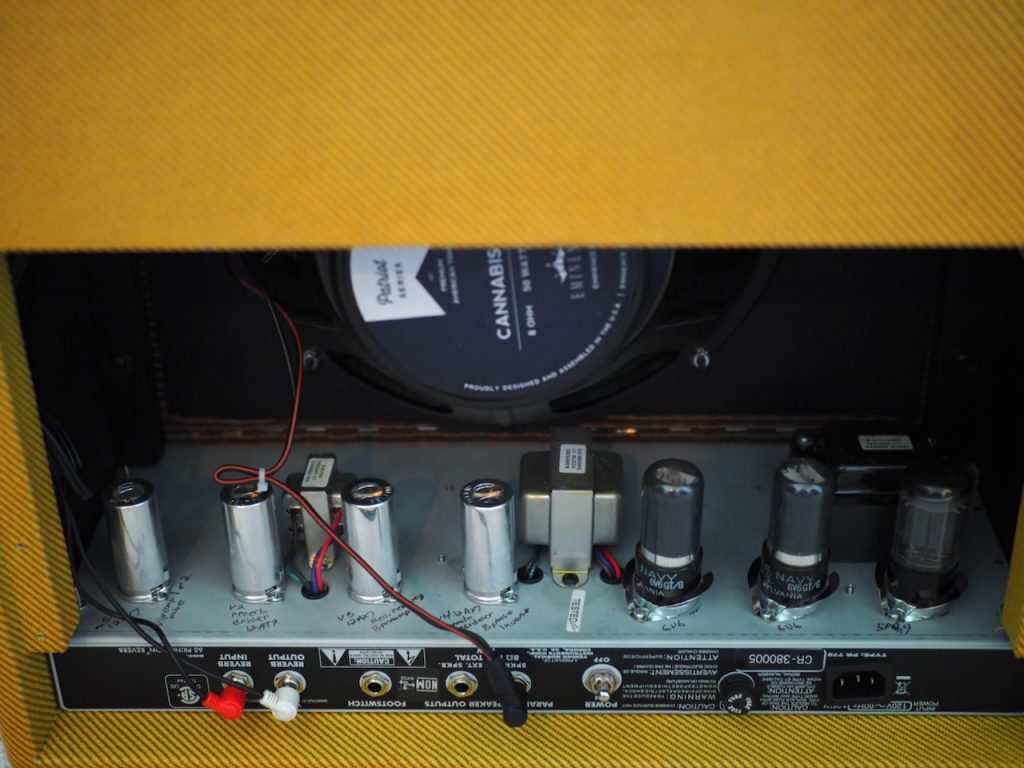
Then I put everything back together, plugged in my Telecaster and gave it a try.
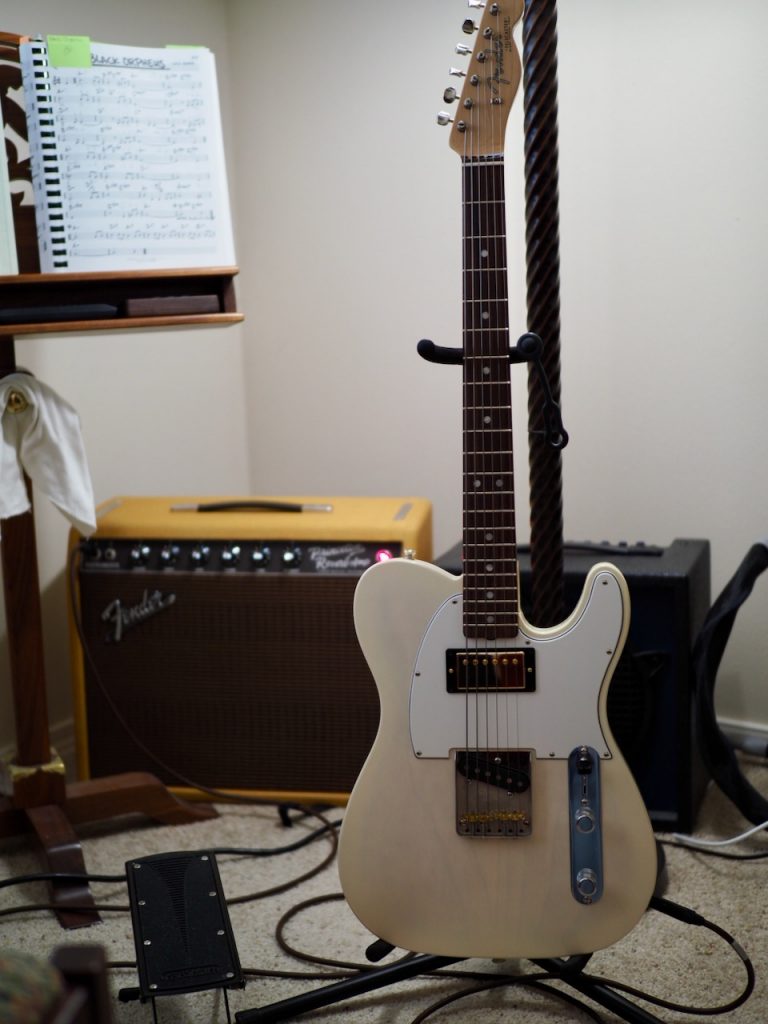
Given my goal of getting a warmer, richer, more jazzy presentation out of my '65 Fender Princeton reverb reissue guitar amplifier, the NOS Sylvania's were a resounding success.
A side benefit was that my '65 Fender Princeton reverb reissue also sounded more even over its frequency range with the NOS Sylvania's.
As I have the energy to get some more playing in, I'll report back on my observations as I get some more time in on the amp.
As always, thanks for stopping by, and may the tone be with you!



























